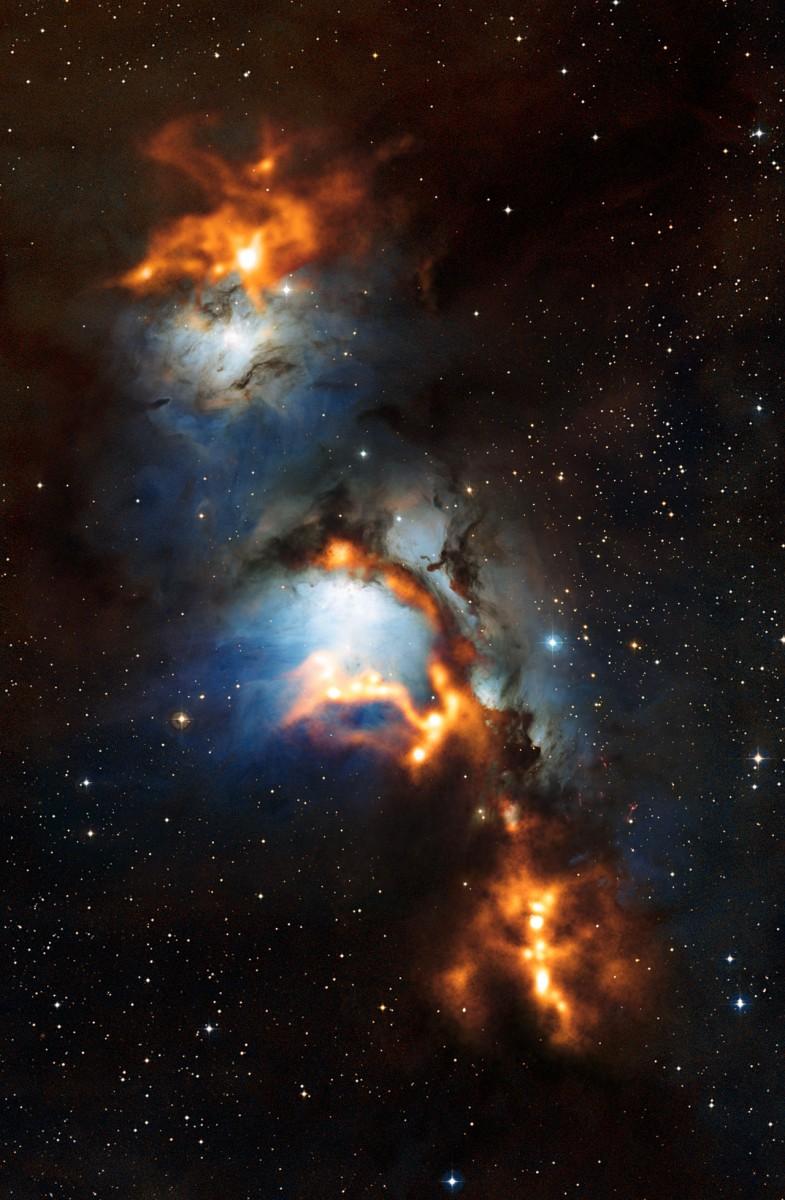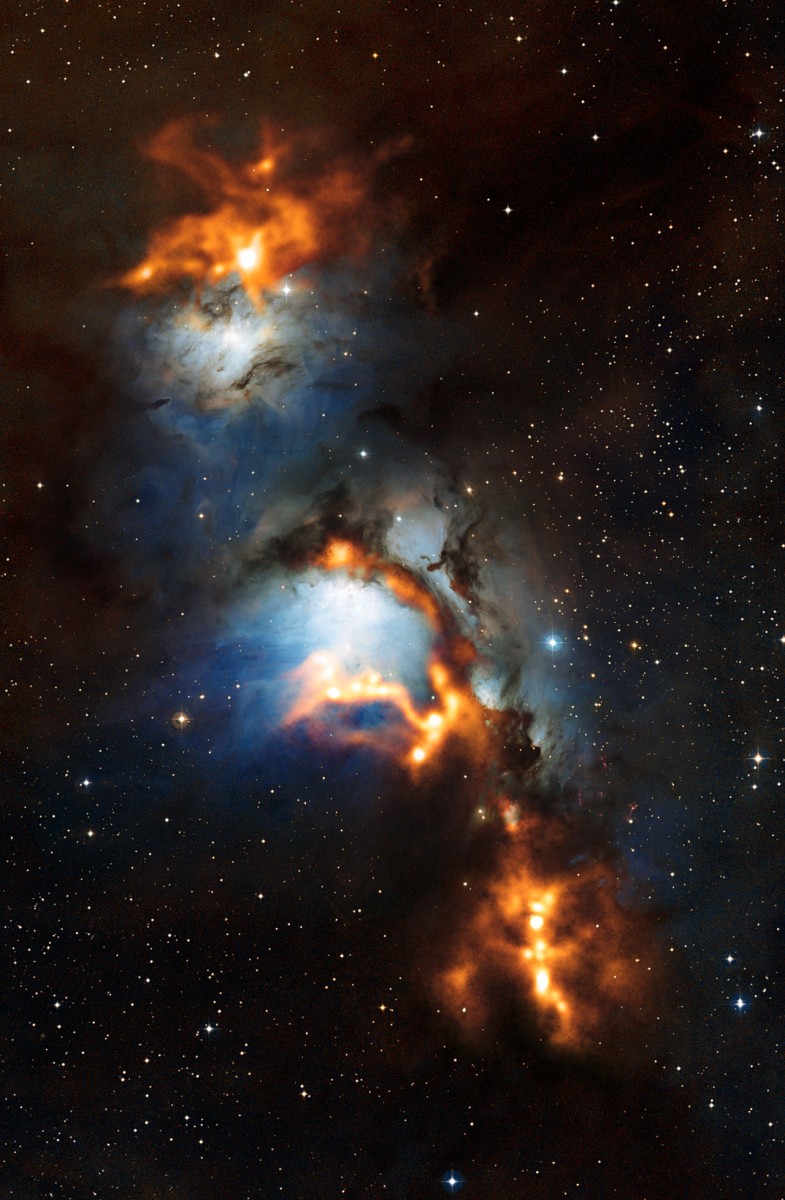The Atacama Pathfinder Experiment (APEX) telescope has captured this new picture of reflection nebula Messier 78 by detecting submillimeter-wavelength radiation from its dust grains.
Also called NGC 2068, this conglomeration of dust and gas is located slightly north of Orion’s Belt.
Messier 78 can be seen at the center of the image, and is referred to as a reflection nebula due to the gentle bluish starlight radiating from the dust clouds when observed in visible light.
The APEX measurements appear in orange, showing the thick clumps of cold dust, some of which are below minus 250 degrees Celsius (minus 418 Fahrenheit). The gas is moving rapidly out of various clumps where young stars are forming.
Another reflection nebula, NGC 2071, is apparent at the top of the photo and is home to a bright young star with a mass equivalent to about five times that of our sun. Only low-mass stars are present in the lower part of the picture.





